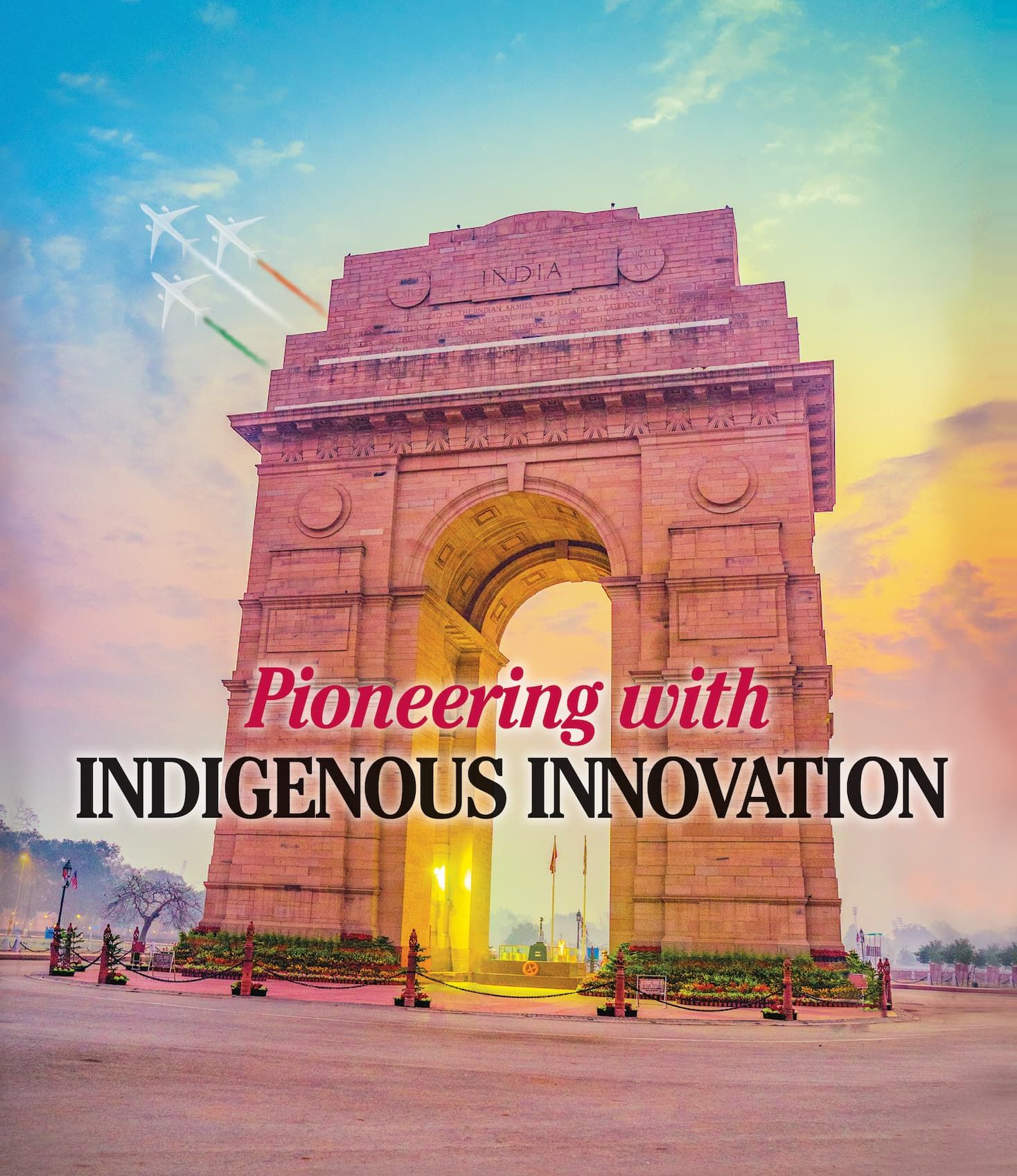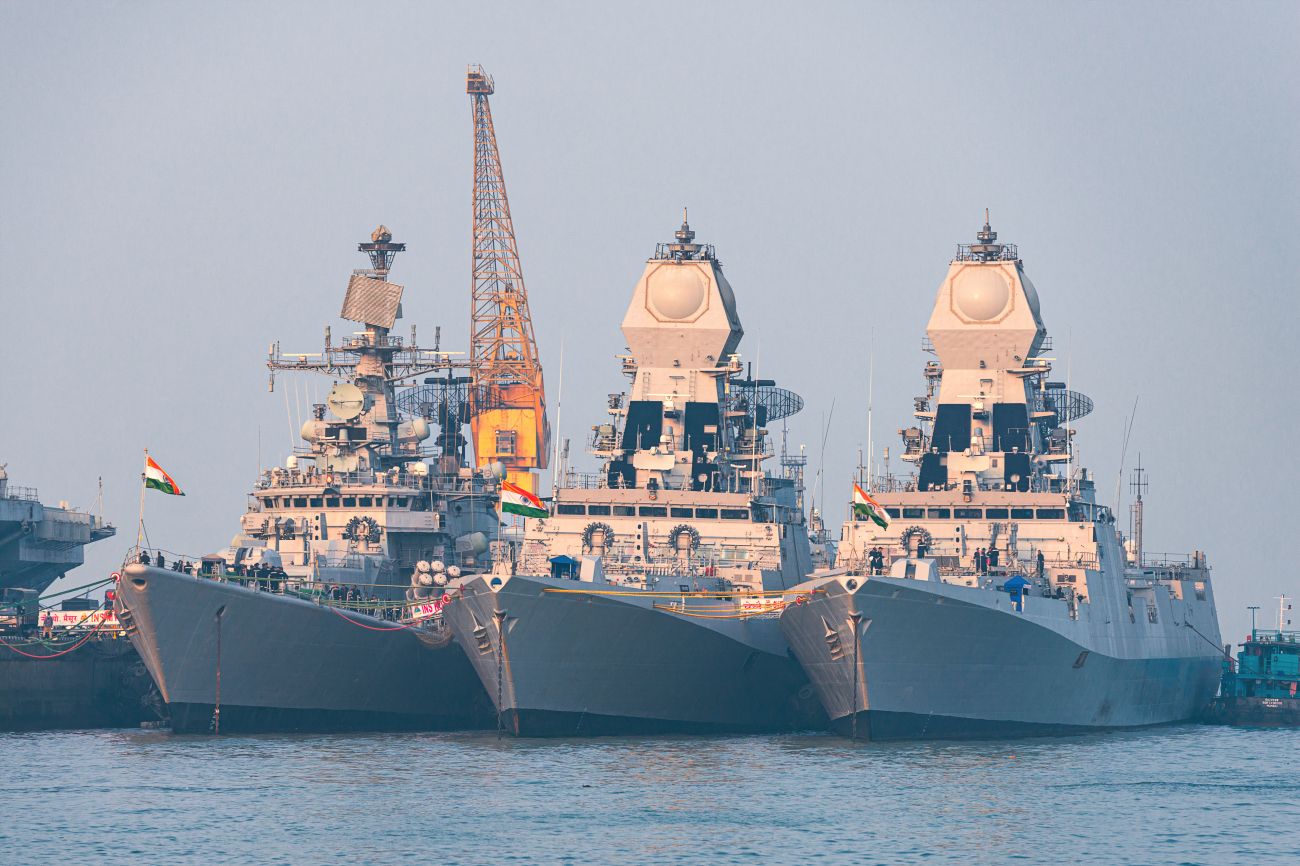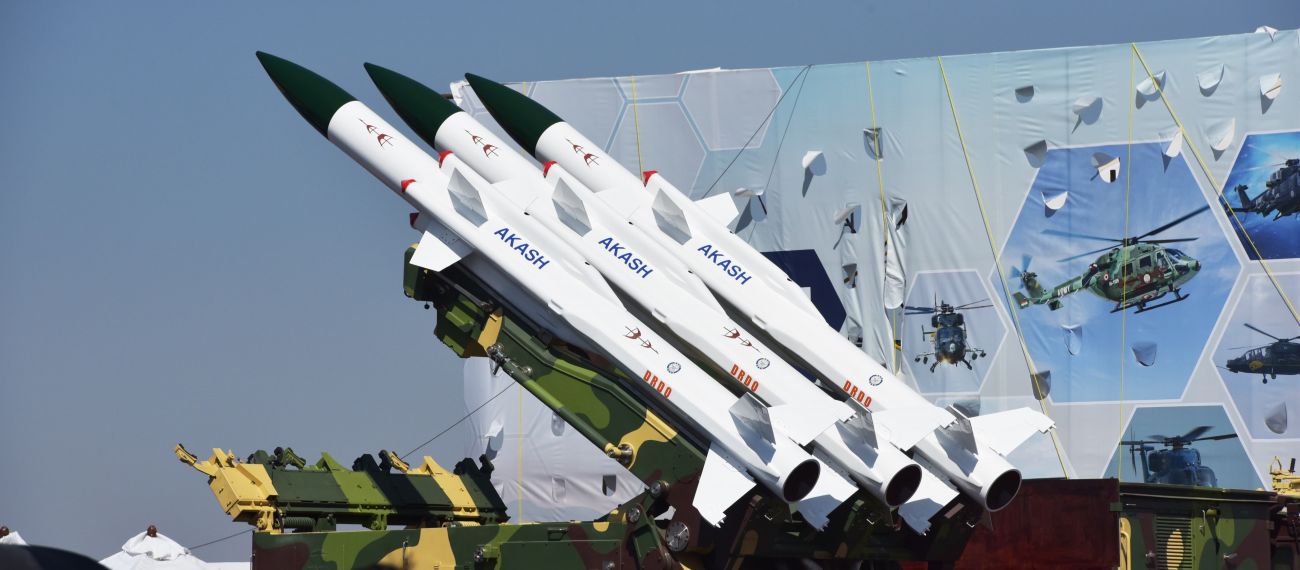Pioneering with INDIGENOUS INNOVATION

Indigenous manufacturers in the defence and aerospace industries, aided by policy reforms, are in a highly competitive landscape, striving to create a diversified mix of world-class products for the sectors while making the entire ecosystem self-reliant.
India’s geopolitical influence has grown steadily formidable over the last decade. A key harbinger of such change has been the ‘Atmanirbhar Bharat’ or Self-Reliant India scheme, chiefly in critical sectors such as Defence. Encouraging indigenous manufacturing and R&D and partnering with private players to usher in material innovation and expand technological capabilities, while enlarging export contribution have formed the foundation for steady transformation in this direction.
Policy change: A step in the right direction
Accelerating sectoral reforms through policy-level focus has given a shot in the arm to the Government’s efforts. These include:
- Releasing the Department of Military Affairs’ (DMA) five ‘Positive Indigenisation Lists’ and the Department of Defence Production’s (DDP) four Defence Public Sector Undertakings (DPSUs) as per the directive to prioritize phased procurement from domestic sources under the Defence Acquisition Procedure 2020;
- Simplifying the industrial licensing process and ‘Make’ procedure, opening up FDI in defence (74% under the automatic route);
- Introducing the iDEX or Innovations for Defence Excellence scheme involving startups and Micro, Small, and Medium Enterprises (MSMEs);
- Launching the SRIJAN indigenization portal;
- Implementing the Public Procurement (Preference to Make in India) Order 2017;
- Making amendments to the Defence Offset Policy over the years;
- Targeting greater investment and enabling easy technology transfer;
- Forming two dedicated Defence Industrial Corridors in Uttar Pradesh and Tamil Nadu.

|
Encouraging indigenous manufacturing and R&D and partnering with private players to usher in material innovation and expand technological capabilities, while enlarging export contribution have formed the foundation for steady transformation in this direction. |
The draft Defence Production & Export Promotion Policy (DPEPP) 2020 is another positive move. With the ambition of positioning India as a world leader in defence manufacturing (aerospace and naval shipbuilding included), the policy aims to provide a major impetus to indigenous cutting-edge design and production through public sector undertakings and private companies. Its overarching goal is to strengthen self-reliance and expand the share of exports.
To ensure India’s emergence as a major defence manufacturing hub, the policy sets out clear objectives:
- Realize a turnover of INR 1.75 lakh crore, including exports of INR 35,000 crore, in Aerospace and Defence goods and services by 2025;
- Foster a robust and competitive domestic defence industry to address the requirements of India’s armed forces with world-class products and next-generation technology;
- Encourage indigenous design and manufacturing to enable significant import substitution;
- Expand exports of key defence products and emerge as a strategic contributor to the global defence value chain network;
- Build an ecosystem to encourage and reward innovation and R&D while underscoring IP ownership.

|
According to statistics from the Department of Defence Production, the size of the defence industry, as of 2019-20 is estimated to be about INR 80,000 crore, with private sector contribution notching up over 21%. |
Entry of private players: a game-changer
While manufacturing capacity significantly expanded through the Ordnance Factories and DPSUs, the landscape was completely altered with the entry of licensed private players in 2001. This led to fast-paced innovation through the discovery of advanced materials as well as the evolution of new-age technology. This has opened the doors to a diversified mix of globally competitive products and services, including personal body armor, arms and ammunition, armored vehicles, military aircraft, warships, submarines, missiles, and electronic equipment, coupled with specialized use of newer, high-performance materials.
According to statistics from the Department of Defence Production, the size of the defence industry, as of 2019-20 is estimated to be about INR 80,000 crore, with private sector contribution notching up over 21 percent.
While ensuring India stands tall in manufacturing, an array of cutting-edge, globally certified master products and components, private players have also enabled building in India for the world. As per the Ministry of Defence, India’s exports in defence touched a record INR 15,920 crore, with 100 firms exporting to 85 countries in 2022-23, a 10x rise since 2016-17.
Indigenous make, globally certified
All the above positive measures have served to flip the switch, opening the doors to pioneering innovation in the areas of manufacturing, materials, technology, and capabilities. Over the last 75 years of India’s history as a Republic, several well-known private partners, smaller entities, and MSMEs have been committed to enabling this journey.
Insulated from global supply chain pressures: With completely localized end-to-end integration, many domestic private players are sourcing and manufacturing 100 percent in India. While this ensures that the sector is insulated from global headwinds, it also creates opportunities for startups and MSMEs to play a more active role in the space.

|
Through continuous R&D, breakthrough improvements in employing structural ceramics for missile components, such as ceramic radomes, have helped design lightweight projectiles keen at precision targeting. |
Competitive landscape promoting IP and diverse innovations: As per the Global Innovation Index 2023 published by the World Intellectual Property Organisation (WIPO), India has moved up from 81st place in 2015 to 40th place. Reforms to transform India into an innovation-focused economy, supported by a dynamic startup ecosystem, a vast pool of talent – employed and potential, the presence of premier educational institutes, and consistent R&D by industry in emerging technologies have all created a robust environment for patenting and innovation. Several big-ticket players are also consolidating their positions and expanding their R&D capacities. This highly competitive space has ensured top-notch, wide-ranging innovations in the Defence arena, exploring new and diverse avenues in technology, materials, and capabilities, fueled by the rapid pace of innovation.
Welcoming new materials: Foraying into newer areas of materials science requires deep expertise with a research-oriented focus to discover or welcome advanced, high-performance materials into the Indian market and manufacture commercially at scale. As an example, graphene has been touted as a ‘wonder material’, especially for Aerospace and Defence applications, due to its flexibility, extraordinary strength, lightweight, and high thermal/electrical conductivity.
Winning at stealth: Stealth technology is a vital cog in Defence, delivering a critical make-or-break through radar cross-section reduction (RCSR). Among the four key techniques of RCSR is camouflaging with the application of radar-absorbing materials such as graphene. Graphene’s unique electromagnetic properties can potentially absorb radar waves, making these aircraft less detectable by enemy radar systems. This could potentially be the best method to improve stealth capabilities for military aircraft and unmanned aerial vehicles (UAVs). It doesn’t involve any design alterations to the aircraft while affording a minimal increase in weight.
Right on target: Through continuous R&D, breakthrough improvements in employing structural ceramics for missile components, such as ceramic radomes, have helped design lightweight projectiles keen at precision targeting.
Conforming to global standards: Highly reliable, ergonomic, lightweight, and easily customizable ballistic solutions for bullet-proof vests, ballistic shields, and ballistic helmets have been engineered to meet up to ‘Level IV’ threat levels, conforming to international standards set out by the National Institute of Justice (NIJ).
Redefining excellence through quality: It is well known that the Defence and Aviation sectors are highly regulated, and suppliers are required to meet the most stringent quality standards. In this scenario, distinction through global certifications such as EN9100 and STANAG 4569 can afford a clear edge – in securing government and global contracts, as a talent magnet and cementing partnerships for deeper cooperation with top-tier research-oriented entities. A sure-fire way to attest to quality excellence, they enable domestic producers to indigenize and supply items earmarked on the government’s import embargo lists while easily exporting to Original Equipment Manufacturers (OEMs) globally.
Making a material difference: For military applications of unmanned aerial vehicles (UAVs), choosing the right material is key. They should be hard yet lightweight, abrasion- and wear-resistant, and have low density while being highly ductile. Graphene-based composites, carbon fiber- reinforced plastic (CFRP) and thermoplastic composites, and advanced ceramics such as boron carbide or silicon carbide are lightweight with high tensile strength – well-suited to design CFRP tubes, panels, landing gears, and customized composite structural parts. Advanced ceramics products for battle tanks and unmanned ground vehicles enable the highest levels of ballistic and blast protection.
Sustained innovation in materials, whether developed in-house or through collaboration, is continually advancing material technology in the Defence and Aerospace sectors.

|
For military applications of unmanned aerial vehicles (UAVs), choosing the right material is key. They should be hard yet lightweight, abrasion-and wear-resistant, and have low density while being highly ductile. |
Closer industry-academia connect
With premier research institutes such as the Indian Institute of Science (IISc) and the Indian Institute of Technology (IITs) offering advanced courses in materials science, the environment is conducive to active, research-led innovations in new materials aided by emergent technologies and industry sponsorship. This create a win-win equation for all parties involved.
Contribution to developing the larger ecosystem
Home-grown manufacturers are not only committed to setting up and expanding capacity supported by in-house R&D centers but are also contributing to developing the entire ecosystem dedicated to critical sectors such as Aerospace and Defence. They are doing this through employment, training and upskilling, collaborations with top-tier research entities and educational institutions and hiring local talent while augmenting India’s share of exports in this space.
A recent case in point is the significant number of Memorandum of Understanding (MoUs) signed between the Government of Tamil Nadu and 53 industries and organizations committing to invest INR 11,794 crore across the 5 nodal cities forming the Tamil Nadu Defence Industry Corridor (TNDIC). As of February 2023, investments worth INR 3,861 crore have already been realized. The state’s radial model also aims to target and integrate MSMEs with the aim to become India’s strategic defence capital.
These sentiments were also echoed at the recently held Tamil Nadu Global Investors’ Meet. While not only contributing to developing and expanding the share of innovative materials, products, capabilities, and technologies from the state, the focus is also on positively impacting the corridors themselves, partnering with smaller vendors and integrators, hiring and training local talent, and collaborating with state institutions in the field of research.
As India enters its 76th year as a Republic state, we can proudly claim that innovation by indigenous manufacturers is imparting true meaning to ‘Atmanirbhar Bharat’ by enabling self-reliance across every sphere of influence.
 |
Subbu Venkatachalam Head of Marketing |



 Facebook
Facebook.png) Twitter
Twitter Linkedin
Linkedin Subscribe
Subscribe